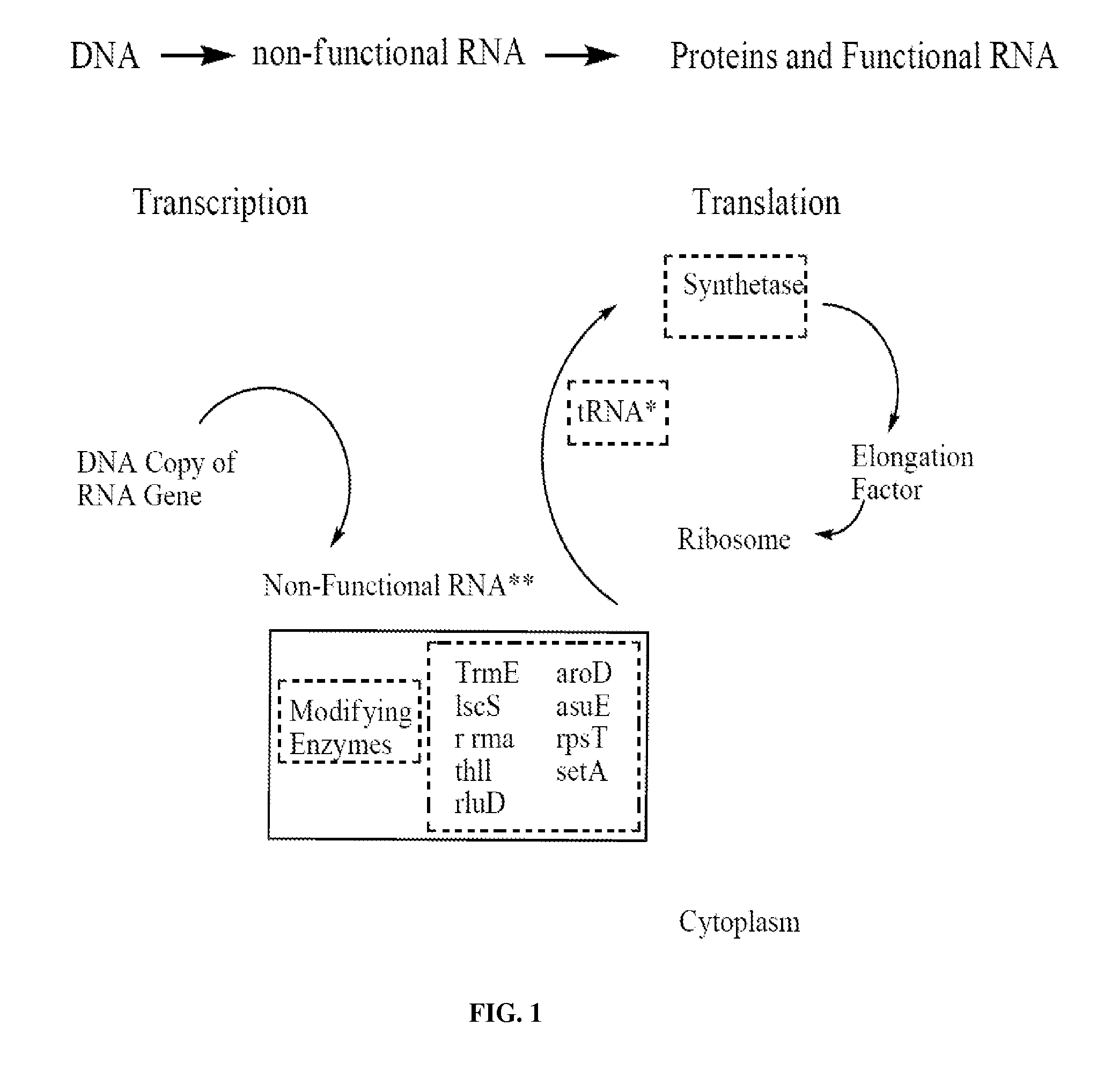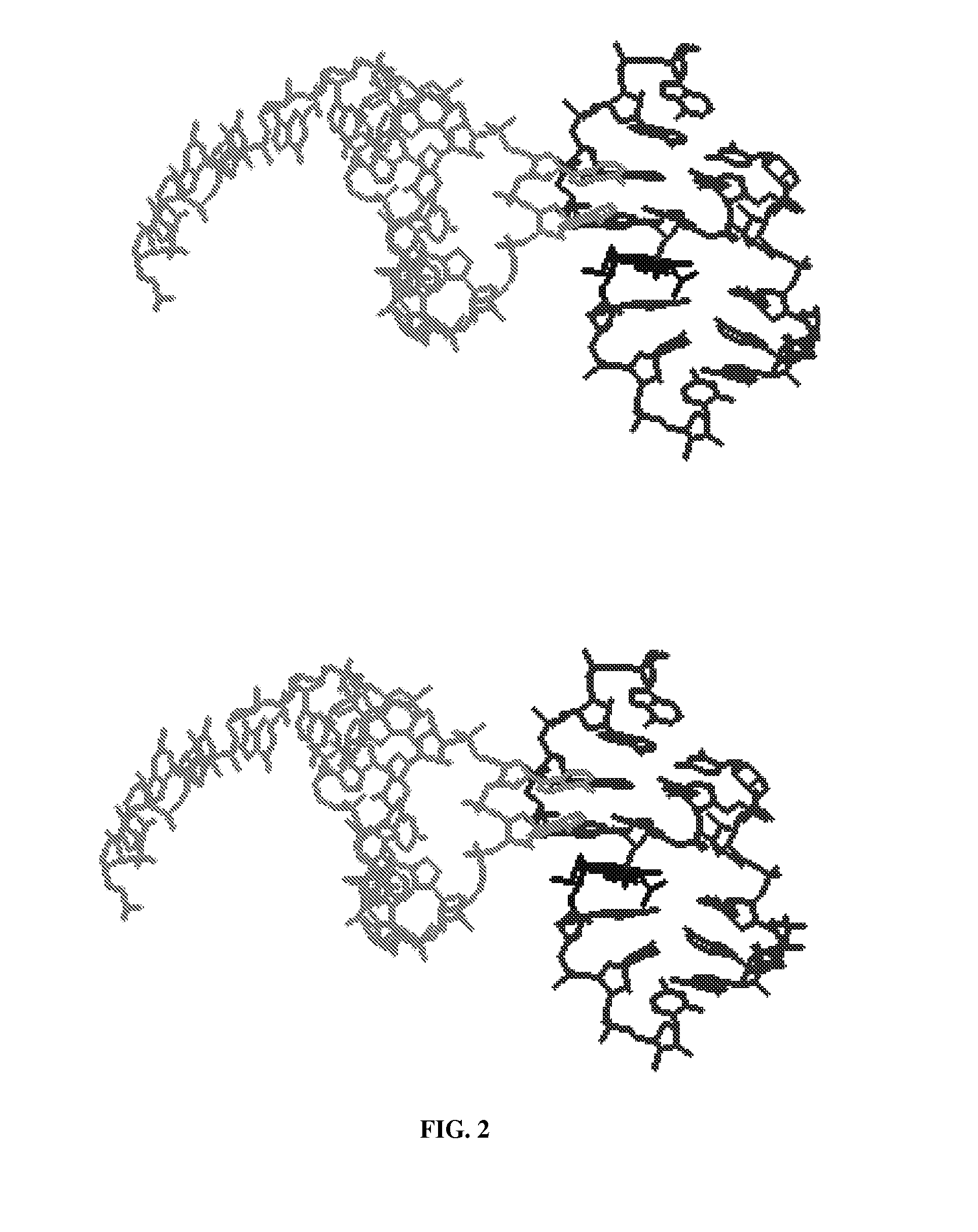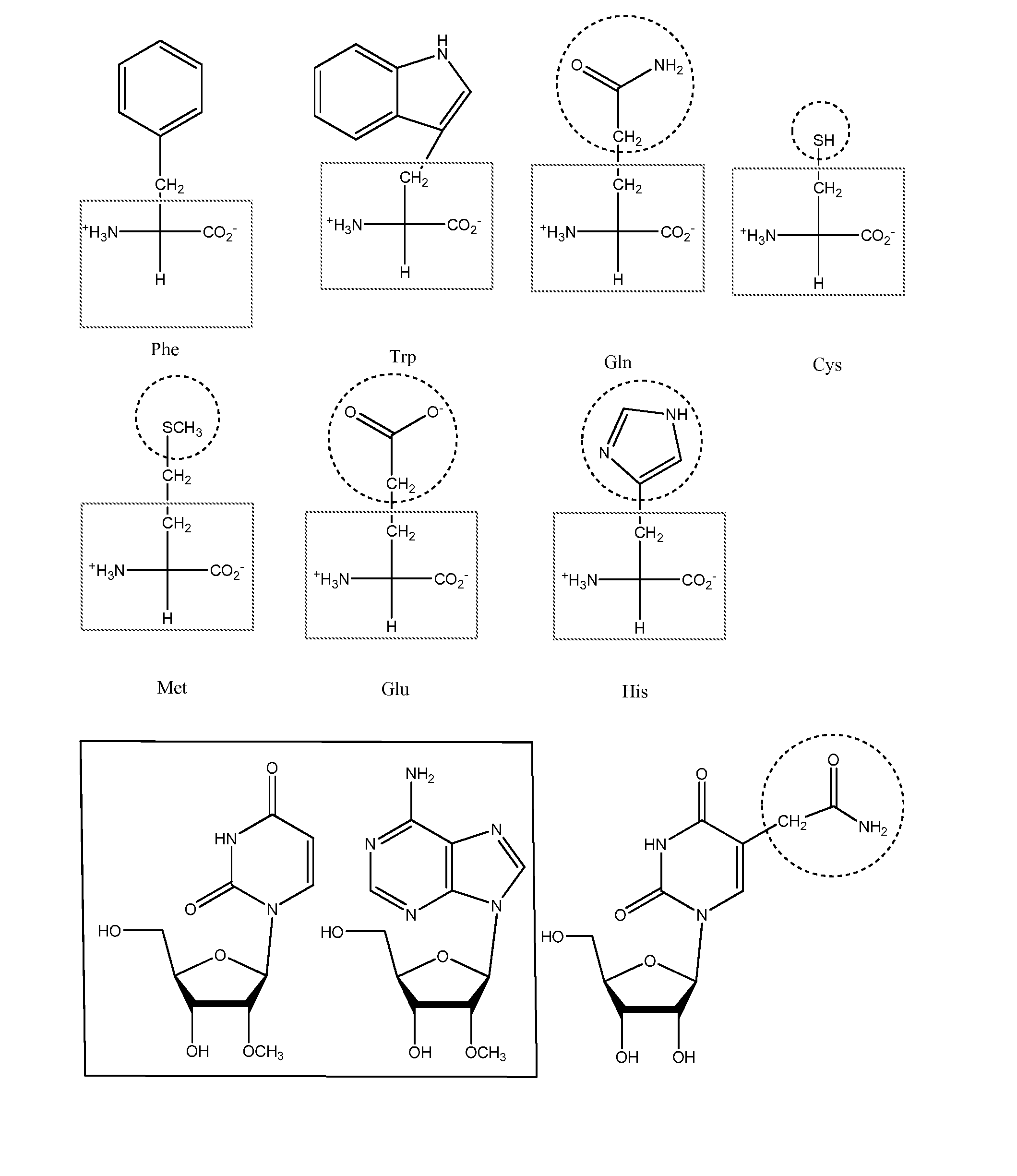Screening methods for identifying specific staphylococcus aureus inhibitors
a technology of staphylococcus aureus and screening methods, applied in the field of antibacterial agents, can solve the problems of high prevalence of ca-mrsa, increased resistance mechanisms, and increased resistance to traditional first-line antibiotics
- Summary
- Abstract
- Description
- Claims
- Application Information
AI Technical Summary
Benefits of technology
Problems solved by technology
Method used
Image
Examples
example 1
Working Assay Protocol for TRANA SA 101 HTS Assay
[0271]The following is a general example of the screening assay described herein.
Assay Target: Ribosome of SA programmed with Arg message.
Assay tool: ASL of S. aureus tRNA Arg with FL label
Sample detection method:—fluorescence quenching
Sample format 96 and 384 well plates[0272]Sample volume: 100 μl and 5 μl[0273]Target concentration: 5 pM[0274]Tool concentration: 10 pM[0275]DMSO concentration 10%
Materials
[0276]Isolated Ribosome (2 pM / μl)[0277]Message 2 ug / μl[0278]ASL 3-6 ug / μl[0279]CMN buffer—80 mM potassium cacodylate, pH 7.2, 20 mM MgCl2, 100 mM NH4Cl, and 3 mM β-mercaptoethanol
Method—96 well format[0280]1. Prepare programmed ribosome as follows:[0281]a. Mix 5 pM per well,[0282]b. 2 μg message[0283]c. 0.3-10 pM ASL[0284]d. 10 μl test compound[0285]e. 100 μl volume[0286]2. 20 min complex formation @ 37° C.[0287]3. Read fluorescence on plate reader.
example 2
HTS Protocol to Identify Potential Inhibitors of S. aureus-Derived Arg ASL RNA Oligomers with Ribosomes
[0288]Introduction
[0289]This assay was designed to identify inhibitors and agonists of S. aureus specific Arg ASL (anticodon stem loop) RNA oligomer interaction with programmed ribosomes, where inhibitors inhibit the complex formed between the ribosomes and the RNA oligomer and agonists stabilize the complex formed between the ribosomes and the RNA oligomer. The assay requires the following materials:[0290]Ribosomes—isolated from E. coli or S. aureus [0291]fMet tRNA (Sigma or Chemical Block, Moscow)[0292]mRNA (including the S-D sequence, the “box” sequence, the codon for methionine, and the codon for arginine that is specific for S. aureus, AGA, optionally with additional base pairs to the left of the S-D sequence and / or to the right of the codon for arginine)[0293]Fluorescently labeled Arg ASL oliogomer[0294]Buffer—HAM20,β[0295]384 well high binding micro titer plates (Matrix Tech...
example 3
In Vivo Studies
[0358]A series of lead compounds identified in the in vitro screening were subjected to in vivo screening, to determine their effectiveness against S. aureus. The strains included Staphylococcus aureus, Methicillin Resistant (ATCC 33591), Methicillin-Resistant Staphylococcus aureus USA300, Staphylococcus aureus 158, Staphylococcus aureus 22, Staphylococcus aureus 2, Staphylococcus aureus (ATCC 29213), and Staphylococcus aureus 182. The majority of the compounds showed a minimum inhibitory concentration (MIC) of between 4 and 128 μg / ml, with one compound showing an MIC of 4-8 μg / ml for each strain that was tested.
[0359]The compounds were re-tested against other bacteria, including Staphylococcus epidermidis (ATCC 35984), Staphylococcus epidermidis (MRSE), E. faecium 134529, E. faecium 145494, E. faecium 29212, E. faecium 161651, S. pneumoniae 49619, and S. pneumoniae 149389.
[0360]In some cases, the compounds were as active, or nearly so, against the non-S. aureus bacte...
PUM
| Property | Measurement | Unit |
|---|---|---|
| Electrical conductance | aaaaa | aaaaa |
| Dynamic viscosity | aaaaa | aaaaa |
| Spectroscopic properties | aaaaa | aaaaa |
Abstract
Description
Claims
Application Information
 Login to View More
Login to View More - R&D
- Intellectual Property
- Life Sciences
- Materials
- Tech Scout
- Unparalleled Data Quality
- Higher Quality Content
- 60% Fewer Hallucinations
Browse by: Latest US Patents, China's latest patents, Technical Efficacy Thesaurus, Application Domain, Technology Topic, Popular Technical Reports.
© 2025 PatSnap. All rights reserved.Legal|Privacy policy|Modern Slavery Act Transparency Statement|Sitemap|About US| Contact US: help@patsnap.com



